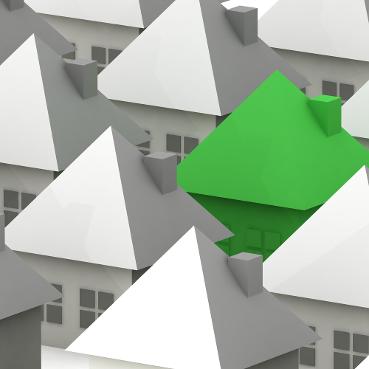The Advantages of Sustainable Building

Sustainable building goes beyond green building concepts - buildings are designed to have a lower environmental impact over their entire lifetime.
Sustainable buildings typically have lower annual costs for energy, water and maintenance/repair. Through integrated design and innovative use of sustainable materials and equipment, the first cost of a sustainable building can be the same as, or lower than, that of a traditional building.
Benefits to the Environment :
1. Water - If people continue to rely on traditional building practices, there will be water shortages. Sustainable buildings, on the other hand, feature systems, appliances, and landscapes that require less water. Water reduction measures include using low-flow taps and shower heads and fixtures and fittings that reduce water use (e.g., pressure-assisted or composting toilets and no water urinals), low-water landscaping, captured rain water for landscaping & toilet flushing and treatment and use of gray water, excess groundwater, and steam condensate.

2. Raw Materials - Instead of depleting natural resources, developers of sustainable buildings use less raw materials and more environmentally-responsible products, such as recycled or renewable resources. They also look for the most durable options to delay the need for replacements and repairs for as long as possible. Lastly, they recycle construction debris to reduce the amount of waste going to landfills.

3. Energy - Sustainable buildings include energy-saving appliances that lower carbon emissions and reliance on fossil fuels.

4. Land - Even the choice of land plays a role in sustainable construction. Properties are built in areas where construction will lead to the least possible land degradation and deforestation while promoting healthy landscaping and preventing erosion. One obvious strategy to reduce first costs is to apply appropriate siting and building orientation techniques to capture solar radiation for lighting and heating in winter and shade the building using vegetation or other site features to reduce the summer cooling load.

5. Lower Air Pollutant and Greenhouse Gas Emissions. One set of environmental benefits from greening buildings that can be fairly easily estimated is lower air pollutant and CO2 emissions. Emissions are reduced by decreasing energy use through energy-efficient design and use of renewable energy.

6. Reduced Volumes of Solid Waste. Several sustainable design principles reduce waste, which in turn reduces the strain on landfills. The main sustainable design principles that reduce waste include the following: Storage and collection of recyclables. The building design should provide space for collecting and storing materials such as paper, glass, plastic, and metals that will be recycled. Construction waste management. During construction, the contractor can recycle or productively use construction, demolition, and land-clearing wastes and divert these wastes from landfill disposal. Recycled content. Designers can select environmentally preferable materials that include recycled materials.

7. Lower Ecosystem Impact. Sustainable Siting uses alternatives to greenfield construction, including using existing facilities (e.g., urban redevelopment) and brownfield sites. Avoiding building on prime agricultural land, floodplains, and habitats for threatened species; or near wetlands, parks, and cultural or scenic areas. The principles also include designing to reduce potentially detrimental conditions, such as slopes that can erode; avoiding adverse impacts on adjacent properties; and carefully considering the building placement amid existing trees on the site. Sustainable siting may also consider reducing the buildings footprint to preserve the amount of open space. Siting near public transportation involves locating the building near rail stations or bus lines and providing covered, wind-sheltered seating or waiting areas for public transport. Use of alternative transportation also can be fostered by installing bicycle storage and showers, alternative-fuel refueling stations, and preferred parking for carpools.

Economic Benefits
Not only does sustainable building improve the quality of our environment but it also has many economic benefits as well. By using sustainable materials, reducing energy consumption, and improving water efficiency it will enable you to:
1. Reduce operating costs.
2. Optimise the life cycle of the building.
3. Increase property value.
4. Improve occupants attendance and productivity.

Social Benefits
Although the environmental and economic benefits of green buildings are well known, the social benefits of green buildings are often ignored. By improving indoor environmental quality you can:
1. Improve occupants comfort and health.
2. Create an aesthetically pleasing environment.
3. Minimise strain on local infrastructure.
4. Increase occupants overall morale.
5. Improve worker productivity.

The green movement is here to stay and as time progresses the benefits of sustainable building will continue to grow. The overall idea of building green is to avoid the depletion of energy, water and raw materials. By prioritising environmental and life cycle considerations throughout all phases of architecture, design and construction you can achieve all of your sustainability goals.

Claire - 082 399 0180 / 011 025 4458
Whatsapp - 066 232 3676
bluedesigns5@gmail.com